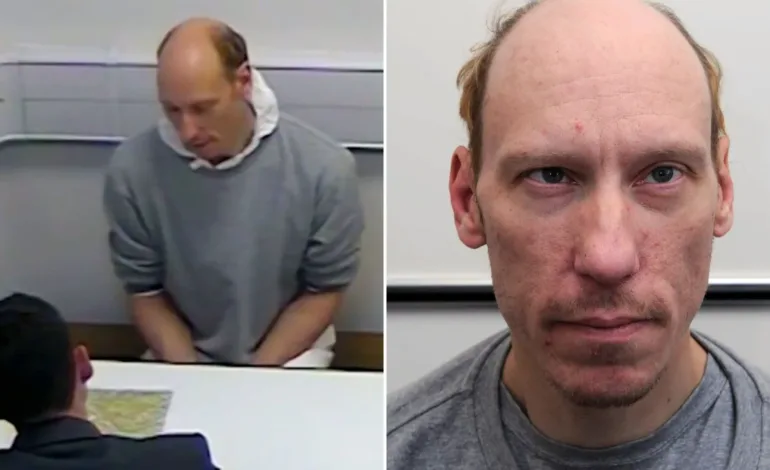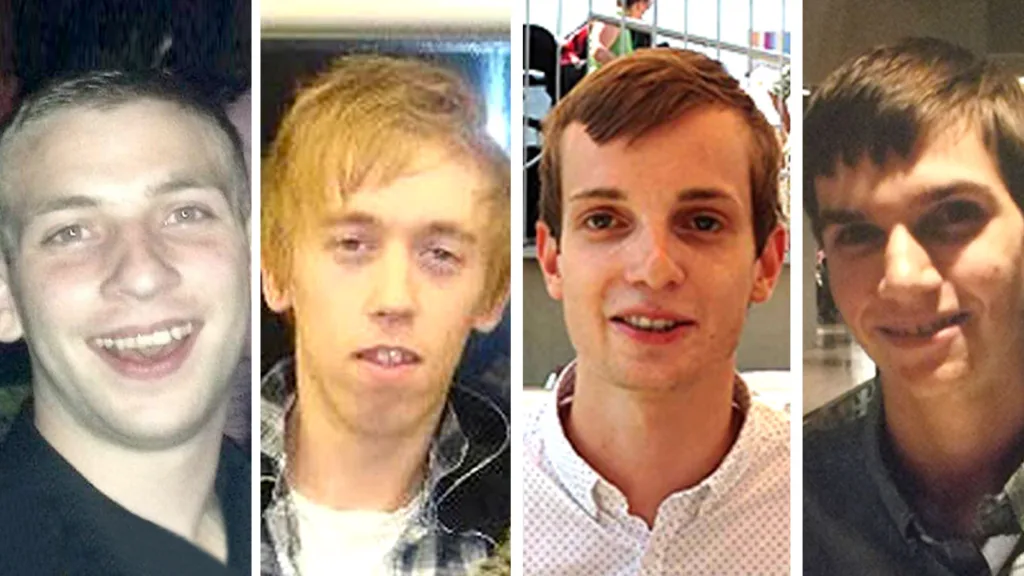
The Grindr Killer. Stephen Port’s Crimes and the Failures of the Metropolitan Police
Stephen Port, known as the “Grindr Killer,” was a notorious figure responsible for a series of heinous crimes in Barking, East London, targeting young gay men. His predatory actions and the initial failures of the police to connect the dots led to multiple tragedies and sparked a broader conversation about systemic issues within the Metropolitan Police.
Stephen Port was born on February 22, 1975, in Southend-on-Sea, Essex, and later moved to Dagenham. After dropping out of art school, he trained as a chef and worked in various catering roles. Port lived with his parents until his early thirties, eventually moving into his own one-bedroom flat in Barking. It was here that he began leading a double life, which would later reveal his predatory nature.
Port’s criminal activities escalated in late 2013 when he started using GHB (gamma-hydroxybutyrate), a powerful sedative often used in drug-facilitated sexual assaults. His neighbors noticed a constant stream of young men visiting his flat, raising suspicions about his behavior. Despite these warning signs, it wasn’t until the tragic deaths of several young men that the full extent of his crimes came to light.
Stephen Port’s victims were all young men whom he lured through the dating app Grindr. Between June 2014 and September 2015, Port drugged and raped his victims, ultimately causing their deaths through GHB overdoses. He then disposed of their bodies near his flat in Barking. His first known victim was Anthony Walgate, a 23-year-old fashion student from Hull. Port contacted Walgate under the guise of offering money for sex. Walgate was found dead outside Port’s flat on June 19, 2014. Gabriel Kovari, originally from Slovakia, was the next victim. The 22-year-old had only been in London for a few weeks before meeting Port. Kovari’s body was discovered on August 28, 2014, in a graveyard near Port’s home. Daniel Whitworth, a 21-year-old chef from Gravesend, Kent, was found dead in the same graveyard as Kovari on September 20, 2014. A fake suicide note was planted by Port to mislead investigators. The final victim, Jack Taylor, was a 25-year-old forklift truck driver from Dagenham. His body was found near the Abbey Ruins in Barking on September 14, 2015.

The initial police response to these deaths was marred by significant failings. Officers did not connect the similarities between the cases, treating each death as an isolated incident. This lack of thorough investigation and oversight allowed Port to continue his killing spree. It wasn’t until the murder of Jack Taylor that the investigation gained momentum. PC Jon Taylor, a parks officer, began connecting the dots after speaking with Taylor’s family, who insisted he was not involved with drugs. Persistent inquiries led to the discovery of CCTV footage showing Taylor meeting Port. This crucial evidence finally led to Port’s arrest on October 15, 2015.
Stephen Port was charged with the murders of Anthony Walgate, Gabriel Kovari, Daniel Whitworth, and Jack Taylor. During his trial, it was revealed that Port had also committed multiple sexual assaults against other men. In November 2016, Port was found guilty on all counts and sentenced to a whole-life term, ensuring he will never be released from prison.
The case exposed severe shortcomings within the Metropolitan Police. A report by His Majesty’s Inspectorate of Constabulary and Fire & Rescue Services criticized the police for being “inexperienced, untrained, and poorly supervised.” The families of the victims accused the Met of “institutional homophobia,” suggesting that bias against the victims’ sexual orientation led to a lack of urgency and thoroughness in the investigation. This tragic case not only highlighted the dangers posed by individuals like Port but also underscored the critical need for systemic changes within law enforcement to prevent similar failings in the future.

Institutional Failures and Homophobia
A report from His Majesty’s Inspectorate of Constabulary and Fire & Rescue Services (HMICFRS) highlighted severe and persistent issues within the Metropolitan Police Service (Met) in their handling of the Stephen Port case. This report pointed to a “calamitous litany of failures,” illustrating how systemic deficiencies and alleged biases contributed to the botched investigation.
The HMICFRS report identified several critical failures in the Met’s handling of the case. Many officers involved in the investigation lacked sufficient training and experience. For example, officers who were first on the scene of the victims’ bodies did not follow standard procedures for suspicious deaths, leading to missed opportunities for gathering crucial evidence. The report noted inadequate supervision of junior officers, which compounded the errors made during the investigation. There was a lack of oversight in ensuring that investigative procedures were properly followed. Despite the similarities in the circumstances of the deaths, police initially treated each death in isolation rather than as potentially linked crimes. This failure to recognize a pattern delayed the identification of Port as a suspect.
Families of Port’s victims have accused the Met of “institutional homophobia,” asserting that bias against the victims, who were gay men, severely compromised the investigation. This claim is supported by several key points. Relatives and friends of the victims who reported their concerns to the police felt their worries were dismissed or not taken seriously. For instance, friends of Gabriel Kovari and Daniel Whitworth repeatedly tried to alert police to their suspicions but were largely ignored. There was a tendency among some officers to make assumptions about the victims’ lifestyles that influenced their perception of the deaths. The police’s initial approach often involved considering the deaths as drug overdoses or accidents rather than potential homicides. The Met failed to effectively engage with the LGBTQ+ community during the investigation, which might have provided valuable insights and fostered trust between the community and the police.
The HMICFRS report and subsequent investigations revealed alarming statistics that underscored these systemic issues. Officers in the Met’s homicide and major crime command were found to be handling significantly higher caseloads compared to their counterparts in other major UK cities. This overload contributed to the lack of thorough investigations. The average response time to critical incidents in the boroughs where the murders took place was higher than the Met’s target, indicating delays in initial response and follow-up actions. Despite the severity of the crimes, the initial investigative resources allocated were minimal. It wasn’t until the fourth murder that significant resources and attention were directed toward solving the case.
The public outcry and pressure from the victims’ families led to several inquiries and calls for reform within the Met. An inquest into the deaths of Port’s victims highlighted the police failings and led to a judicial review. The coroner’s inquest concluded that fundamental failures in the investigation allowed Port to continue his killing spree. In response to the criticism, the Met announced several policy changes aimed at improving their handling of such cases, including better training for officers on dealing with deaths in the LGBTQ+ community and the introduction of more stringent supervision protocols. There have been calls for ongoing monitoring and external reviews of the Met’s practices to ensure accountability and prevent similar failings in the future.
The case of Stephen Port not only exposed a serial killer but also highlighted deep-rooted issues within the Metropolitan Police. The combination of institutional failures and alleged homophobia played a significant role in the mishandling of the investigation, leading to unnecessary additional suffering for the victims’ families and friends. The aftermath has prompted a critical re-evaluation of police practices and a push for substantial reforms to restore public trust and ensure justice for all communities.



